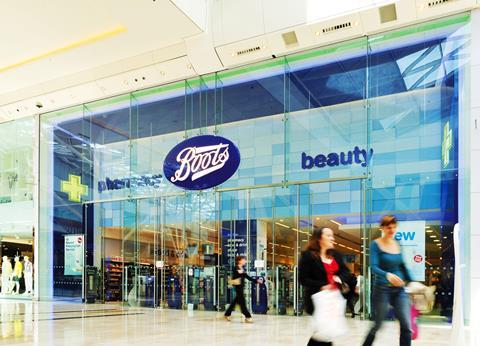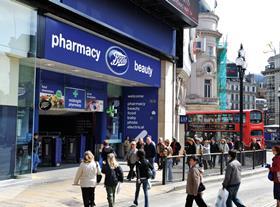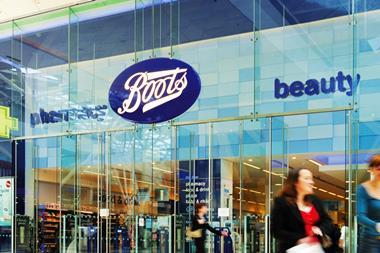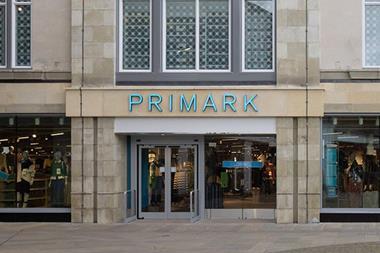Walgreens Boots Alliance has given up trying to sell the UK pharmacy. So what’s the future for Boots and its many ‘tired high street shops’?
It was hardly a ringing endorsement. After calling off the sale of Boots last month, Walgreens Boots Alliance CEO Rosalind Brewer told analysts Boots should be “good enough for us to retain as well as to look at strategic opportunities for it”.
So what now? It’s going to be a real challenge in how much human and financial capital Walgreens is willing to invest, says Clive Black of Shore Capital. “Retying the umbilical cord between owner and business once it is broken isn’t easy,” he says. “The reality is the parent doesn’t want the child and that creates all sorts of difficulties in retaining and attracting the best people,” he adds.
UK MD Sebastian James did his best to talk more bullishly, hailing Boots’ post-Covid transformation in a trading update after the announcement, promising “significant investment” online and in stores.
Sales at Boots jumped 24% in the third quarter to 31 May as shoppers returned to high streets. The growth came on top of a 16% increase in Q1 and 22% in Q2. However, soft figures from a year ago flatter recent trading, and footfall is still way off where it was in 2019.

Retail analyst Nick Bubb reckons retail sales are still more than 10% below pre-pandemic levels. “On a three-year view, Boots has lost overall market share to the supermarkets, discounters and online players,” he says. Given Boots says beauty market share is at a record high of 40% and the pharmacy business is flat, Bubb believes something else must be dragging it back.
On the other hand, Boots has received plenty of support, with about £200m-£300m invested per year into logistics, warehousing and enhancing digital capabilities, says a source close to Walgreens. And despite a notoriously tired retail estate, Black argues Boots is no basket case. “There are some fantastic features in terms of heritage, trust and brands such as No7 – and it is still very cash-generative.”
Those qualities were not enough to convince private equity suitors to cough up the £7bn price Walgreens wanted. The only concrete bid after a six-month auction came from Apollo Global Management and India’s Reliance Industries, but Walgreens felt the £5bn-plus offer wasn’t fair value.
A former Boots executive says the £7bn asking price was not rooted in reality. “It’s a very mature business,” he says. “Highly cash-generative but almost a utility business in that growth prospects are very low. It has high market shares in areas in which it is strong and is respectable in other areas. But most of its stores – and this has been the fundamental problem for the past 35 years – are in locations where the natural footfall is in decline because of the internet and out-of-town shopping.”

Makeover
Walgreens has made some progress, closing about 200 of the worst offenders, investing in 100 renewed beauty halls, opening new stores in better locations and reinventing London flagships.
But Catherine Shuttleworth, CEO of marketing agency Savvy, argues more focus is needed to get the retail basics right.
“No one wants to spend cash in dirty shops, especially not one associated with health and wellbeing. Boots need to offer a stronger voice in health and well-being, step up on big issues and have plenty of resource to give supportive advice.”
Consumer expert Kate Hardcastle complains of “messy, overwhelming” counters and overworked pharmacists too busy to properly help customers.
She points to a concept store in London’s Covent Garden – which UK MD James called the start of a “journey of reinventing Boots” at the 2019 opening – as a missed opportunity.
“Go to most other branches and any sign of this concept has generally been done in such a limited way it means little,” Hardcastle says.
For Grocery Insight’s Steve Dresser, the issue is more fundamental. “There’s a good retailer in there somewhere, but it’s hard to see what shops on tired high streets would get from a refit.”
More than 1,100 of its 2,247 stores are located on the high street and town centres.
So why doesn’t it simply shutter more of its stores? Aside from reliable cash generation, one property expert says the answer lies in the pharmacy licences attached to them.
“The government announced years ago they wouldn’t be granting more of these pharmacy licences. Hence they are gold dust. This goes some way to explaining why Boots keeps so many legacy stores.”
Boots is also known among property agents for its fondness for restrictive clauses in leases, preventing other pharmacies – not least Superdrug – getting into the same immediate area.
Talking of Superdrug, Dresser thinks Boots is insufficiently in touch with the younger demographic. “All the teens go to Superdrug now,” he says. “Boots is like the older mum trying to be cool and failing.”
Then there’s value. In toiletries, Boots is getting outflanked by variety discounters on value, according to Dresser.
And Black says an increased focus on health and beauty by Sainsbury’s and Tesco – both run by former Boots bosses – and the “enormous” volumes of toiletries being shifted by Home Bargains, have left Boots caught in a pincer movement.
“Prices are high, and it is over reliant on promotions, leaving its attempt at EDLP undercut in its own stores with a raft of deals,” Dresser says. “What is their value proposition in this regard?”
Shuttleworth gives an example of a Garnier product reduced from £6.25 to £3.50 in Boots this week, that could also be bought in Bodycare for £2.95.
“It’s a return to insult pricing by one of the brands we should be able to trust the most.”

GlobalData retail analyst Juliet Cuell counters that Boots has taken steps in the right direction to improve its value-for-money offer, including the launch of its Price Advantage scheme in-store and online, and a price freeze on 1,500 essential own-label products.
“However, it will need to expand its membership pricing scheme to include a greater variety of brands or it risks losing shoppers to discounters.”
Online is one area where Boots can credibly point to improvement, with sales doubling since pre-Covid levels. It claims to be the UK’s most visited health and beauty website.
However, Dresser and Black remain unimpressed when compared with the likes of Next and M&S, and Shuttleworth highlights the rise of DTC operators such as Beauty Bay and Look Fantastic.
Cuell says Boots needs to improve fulfilment “to align with competitors such as Asos”, with “free delivery only available for orders over £25”.
The former Boots executive says critics shouldn’t lose sight of the fact that it’s a “very stable” business generating good cashflow. “To transform it on the scale needed to make it all bright and shiny would be a ludicrous capital spend on which you would never get a return,” he argues.
Analyst Bubb suspects Boots will continue to tick along, with Walgreens likely hoping to sell it to private equity once the UK economy picks up next year.
“The better overall trading performance and improved profits clearly give Walgreens some comfort about having to hold on to the business, but I wouldn’t get carried away about its prospects,” he adds.
“It is a trusted brand with growth opportunities in healthcare, but it’s mature, with too much space and facing strong competition.”




















1 Readers' comment